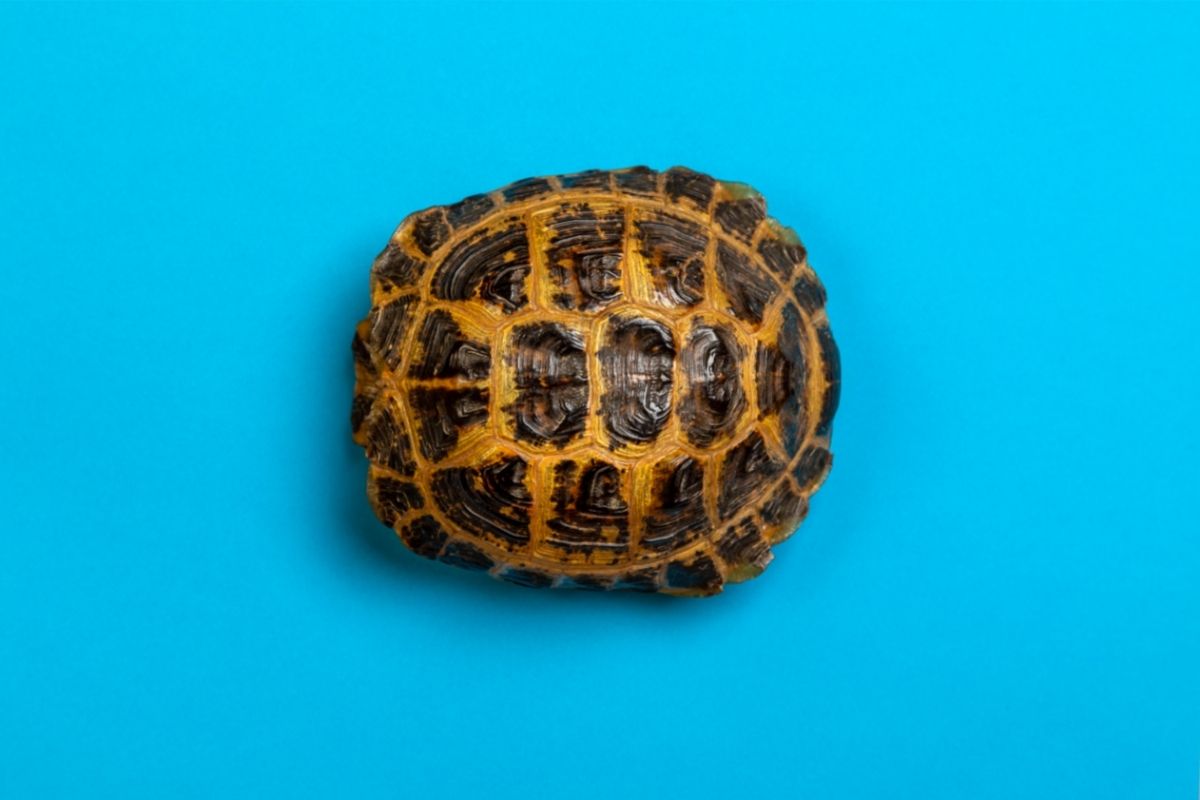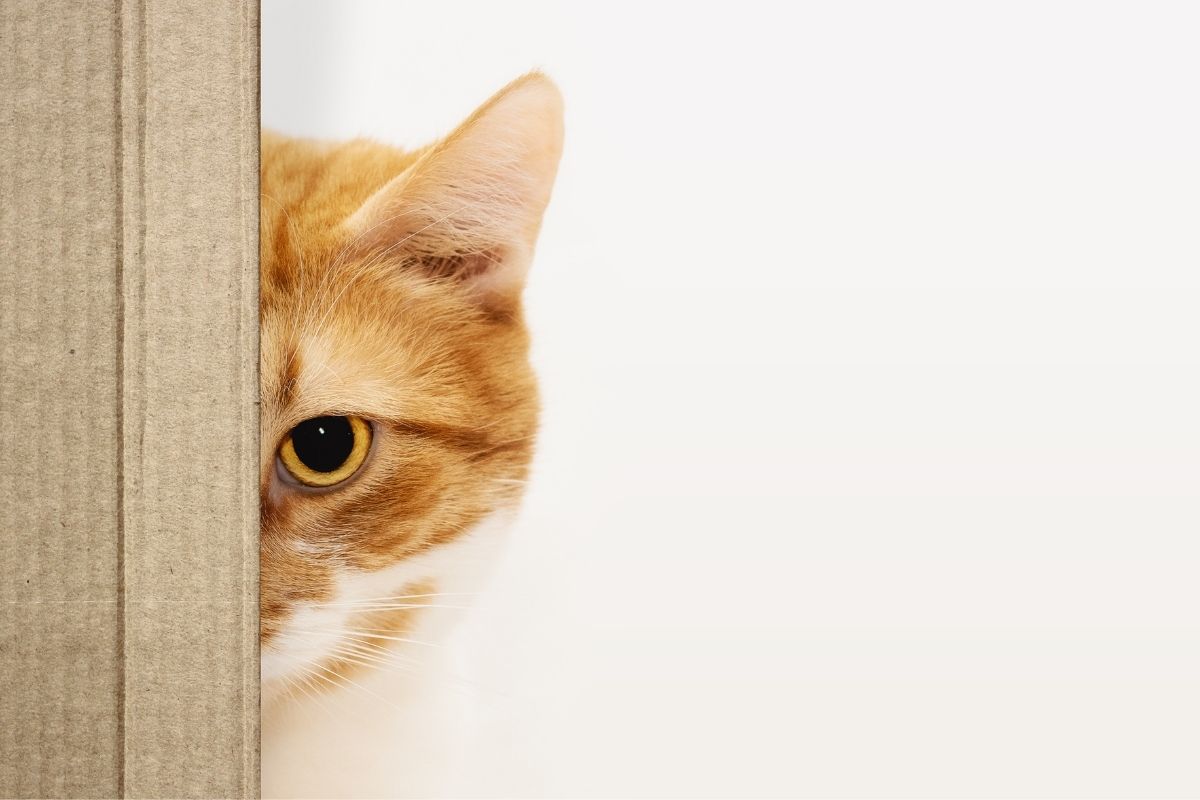Cats as furry companions are cute, but they also pose a threat to some other, more vulnerable pets, such as mice, rats, and turtles. It’s natural to wonder if a cat will turn its attention from birds and eat your turtle.

Suddenly, you are racked with worry and fear, unsure how you can best protect your turtle from cats and other predators.
Well, no more! Today, we find out if your cat can eat your pet turtle and how you can ensure that they both live harmoniously in the same home.
Do Cats Eat Turtles?
Yes, wild cats do eat turtles as part of their regular diet. Naturally, cats are omnivores, and their natural instinct tells them to hunt anything that could be possible prey.
Turtles are slow-moving creatures, making them easy prey for even domestic cats if they are not well protected by their owner.
Cats usually prefer eating the meat of small animals like rabbits, mice, birds, or squirrels.
However, most of our domestic cats do not eat all these animals all the time. As your common house cat will be fed with wet or dry cat food, they don’t usually need to hunt.
However, cats still enjoy hunting, and even if they don’t eat their prey, they will likely play with it until it’s dead.
The turtle’s shell will protect the tortoise from the worst, but there is a significant amount of damage a cat can do when playing with a turtle.
Saying this, whether a cat hunts or plays with a turtle depends largely on the cat’s personality, age, and the environment it lives in.
Does The Turtle’s Shell Protect It From Cats?
A turtle’s shell protects it from many predators. However, it does not protect the turtle fully against cats.

While a turtle’s shell may help prevent some injuries, it won’t stop a cat from biting into its head or neck.
A cat’s sharp teeth can easily tear through the soft tissue of a turtle’s limbs.
Even though a cat cannot bite completely through the shell, it can still cause serious injury.
When a cat bites into a turtle’s shell, it will often leave behind a scratch or even a crack. This wound will not heal very well and leaves scars on the turtle’s body.
Many people believe that a turtle’s shell protects it against cats, but this is certainly not true for baby turtles that are still vulnerable.
Their shell is much softer and may be cracked by a cat’s powerful jaw.
If a cat is determined to get into a shell, then it may pull the limbs of the turtle, removing its body from the shell.
The turtle cannot live without the shell and removing it from its protection would cause serious damage to its spine and muscles.
Playing with a turtle may be fun for the cat, but it can lead to serious injuries for the tortoise.
Most cats love to chase after moving objects. They see chasing as an opportunity to exercise and show off their skills.
Can A Cat Kill A Turtle?
It is important to understand that a cat’s intention depends on its environment. Most house cats don’t kill because they are hungry.
Rather, they will because they enjoy the hunt and play. Cats are naturally curious and playful and will try to interact with any animal they come across.
They might even start to play with a turtle once it becomes too close to their territory.
Do Cats Eat Turtle Eggs?
Some cats have been known to eat eggs laid by female turtles, but this is rare.
If you find a cat eating eggs, it means that your pet has found a nest and decided to try an egg. Most domesticated cats will not eat turtle eggs.
Instead, they will likely play with them.
How To Stop Your Cat From Chasing Your Turtle
There may not be much that you can do if you notice your neighbor’s cat playing with your turtle out in the garden.
However, you can take steps to make sure that your cat doesn’t chase your turtle, and you can protect your turtle from injuries.
Introduce Your Cat And Turtle To Each Other
They may not speak the same language, but as they will all cohabitate, a proper introduction is important.
You should introduce them slowly so that both animals feel comfortable around each other.
Make sure that your cat has plenty of space to roam around the garden before introducing it to your turtle.
This way, the cat can observe your turtle before deciding whether it wants to approach it.
Make sure that you observe both animals carefully and only step in when you think your cat may harm your turtle.
Keep Your Turtle Away From Your Cat
As mentioned, cats are very curious, especially when they are not allowed to go in somewhere.

This means that they will want to explore every nook and cranny of your home.
Cats have been known to hide under couches, beds, tables, and chairs. Your cat may also climb up onto shelves and other places where it can reach high-up spots.
You should keep your turtle safely away from all of these areas so that it has no chance of being attacked.
Make sure that the area around your turtle is safe and free from hazards. Ensure that its terrarium or aquarium is on a stable surface.
When a cat jumps onto it, it should not collapse or fall to the floor. This could hurt both the turtle and the cat (and it would create a great mess!).
Train Your Cat
This is much easier with a kitten, as you can train your cat from an early age that it shouldn’t touch the turtle.
With the slow introduction, you learn to understand how your cat reacts to your turtle, and you will then be able to intervene if your cat tries to attack your pet tortoise.
You can try to teach your cat not to chase a turtle by using a toy instead. You can also use a bell attached to a string to lure your cat away from the turtle.
Your cat will likely just need a few weeks to get used to your turtle, and it will understand that it’s not a toy.
Watch Both Animals
It is important to watch both animals closely at all times. If your cat does decide to chase your turtle, you must stop it immediately.
If you see your cat chasing your turtle, you should say a firm no to the cat and pick up the turtle, gently placing it back inside its enclosure.
Conclusion
Turtles are beautiful creatures, and so are cats. Both have their charm, and there is nothing wrong with them living together.
As long as you introduce them to each other slowly and you ensure that your cat understands that your turtle is not a toy, then both pets can cohabitate peacefully.
Frequently Asked Questions
Can Cats Live With Turtles?
Yes, cats can live with turtles. Some people even keep their pets together.
However, both pets need to be properly introduced to each other, and you need to train your cat that your turtle is not a toy.
Can Cats Get Salmonella From Turtles?
Yes, turtles can carry salmonella, and this can spread to other pets, such as cats and dogs.
However, it’s unlikely that your cat will catch salmonella from your pet turtle because it will not get to eat it.
Why Do Turtles Bite Cats?
This can have many different reasons. One of the more unusual explanations is that turtles try to enter into a courtship with their furry companion.
